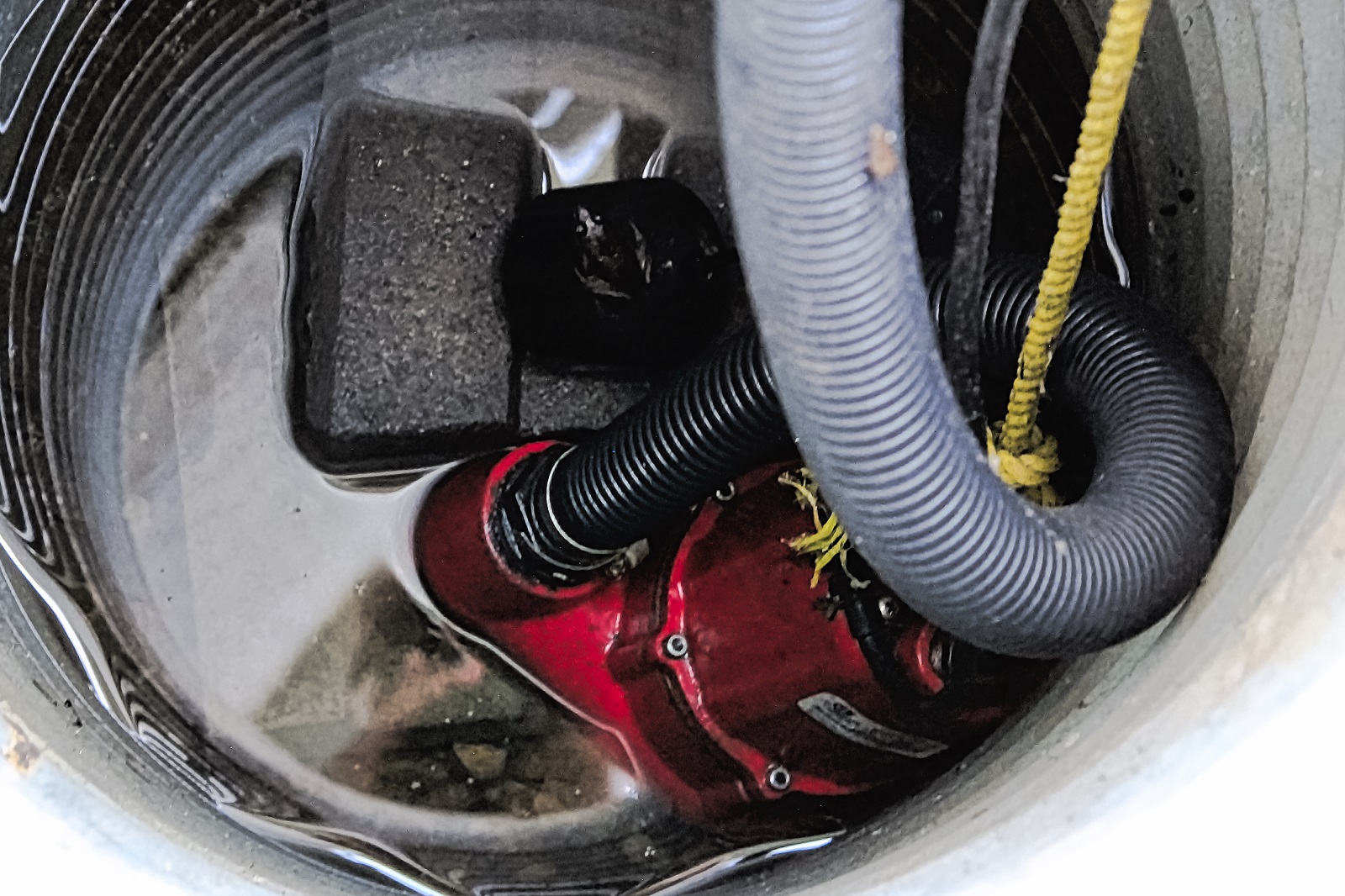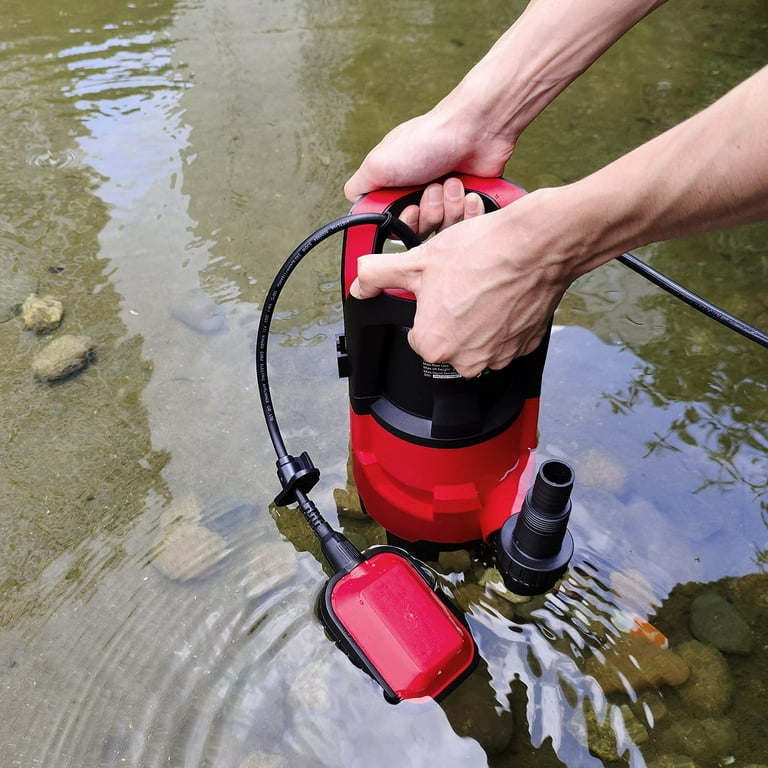Simple Methods to Maintain a Sump Pump
Simple Methods to Maintain a Sump Pump
Blog Article
We have come across this great article pertaining to Keep Your Sump Pump Clean, It'll Keep You Dry down the page on the net and felt it made sense to relate it with you on this site.

Sump pumps are vital components in several homes, specifically in areas prone to flooding or extreme moisture. They assist stop water damages by successfully getting rid of excess water from cellars or crawl spaces. Nonetheless, like any other device, sump pumps call for normal upkeep to guarantee they function effectively when required the most. Cleaning your sump pump is a vital part of its upkeep, and comprehending exactly how to do it properly can conserve you from expensive repair work and potential disasters.
Intro
Preserving a clean sump pump is essential for its appropriate performance and longevity. Disregarding this essential job can lead to obstructions, malfunctions, and eventually, water damage to your property. Therefore, learning how to cleanse a sump pump is essential for house owners that count on these gadgets to maintain their basements dry and safeguarded.
Indicators of a Dirty Sump Pump
Understanding when your sump pump needs cleaning is essential for preventing prospective malfunctions. Some common indicators that indicate a dirty sump pump consist of weird sounds throughout operation, minimized water circulation, and noticeable particles in the pit. If you see any one of these signs, it's important to clean your sump pump immediately to stay clear of any additional problems.
Getting ready for Cleaning
Before you start cleansing your sump pump, it's necessary to take some safety precautions. Start by shutting down the power to the pump to stay clear of any kind of electric crashes. Additionally, use appropriate protective equipment, such as handwear covers and safety glasses, to shield yourself from dirt, debris, and potential virus.
Comprehending the Sump Pump
Prior to diving right into the cleansing procedure, it's important to have a basic understanding of just how a sump pump functions. Commonly mounted in a pit or container below the basement flooring, a sump pump includes a number of vital components, consisting of a pump, a float switch, and a discharge pipe. When water builds up in the pit, the float button activates the pump, which after that pumps the water out with the discharge pipeline, away from the building's foundation.
Detailed Guide to Cleaning a Sump Pump
Turning off the Power
Begin by detaching the power supply to the sump pump to prevent any kind of crashes while cleansing.
Checking for Appropriate Performance
Before re-installing the pump, perform a quick examination to make certain that the float button triggers the pump properly. Pour some water into the sump pit and observe the pump's operation. If everything is operating correctly, you can reconstruct the pump and reconnect the power supply.
Eliminating Particles and Dust
Make use of a container or a scoop to remove any visible debris, dirt, or sediment from the sump pit. Dispose of the debris effectively to stop it from blocking the pump or the discharge pipe.
Cleaning up the Pump and Float Change
Once the pit is free from particles, meticulously get rid of the pump from the pit. Inspect the pump and the float button for any kind of signs of damages or wear. Utilize a soft brush or towel to clean up the surfaces and eliminate any type of gathered gunk.
Purging the System
After cleaning up the pump and float button, flush the sump pit with tidy water to eliminate any remaining dust or sediment. This will certainly aid ensure that the pump runs efficiently and efficiently.
Upkeep Tips to Keep Your Sump Pump Clean
Along with routine cleaning, there are several maintenance suggestions you can comply with to maintain your sump pump in optimum condition:
Verdict
Cleaning your sump pump is an essential aspect of its upkeep and makes certain that it runs effectively when you require it the most. By complying with the actions outlined in this overview and including regular maintenance right into your routine, you can prolong the lifespan of your sump pump and protect your home from water damages.
6 STEPS ON HOW TO CLEAN A SUMP PUMP PROPERLY
UNDERSTANDING SUMP PUMPS
Your sump pump plays a crucial role in protecting your home by managing and removing excess water. It primarily functions as a “shield”, guarding your basement against the damaging effects of water accumulation. The pump is housed in a sump pit in the lowest part of your basement, and its job is to pump out any water that collects there.
During heavy rainfalls or when snow melts rapidly, water can infiltrate your basement, posing potential risks like flooding, structural damage, and harmful mold growth. Here, the sump pump springs into action, pumping out the intruding water and directing it away from your home.
SAFETY FIRST
Before cleaning, remember to prioritize safety. Disconnect the sump pump from the power source to prevent any accidental electric shocks. Also, wear sturdy gloves to protect your hands from any sharp or dirty components within the pump.
REMOVE THE SUMP PUMP
After ensuring your safety, the next step is to remove the sump pump from its pit. Doing this might require careful maneuvering as you don’t want to damage any pump components. Once removed, clean the sump pit to remove any accumulated debris or sludge.
INSPECT THE PUMP
Inspect the pump for any visible signs of wear or damage. Check the power cord, float switch, and impeller housing. If any components look worn out or damaged, consider replacing them to ensure optimal performance.
CLEAN THE PUMP
Thoroughly clean the pump with warm, soapy water. Make sure to rid it of any dirt, gravel, or other debris that might impede its performance. You can use a toothbrush to clean the small, hard-to-reach parts of the pump.
REINSTALL THE SUMP PUMP
Reinstall the pump into the sump pit Make sure it’s positioned correctly to remove the water effectively Once it’s back in place, reconnect it to the power source TEST THE PUMP
Finally, pour some water into the pit to ensure the pump works correctly. It should start automatically and begin pumping out the water; if it doesn’t, check the power source and the positioning of the pump.
Remember, while cleaning your sump pump is an essential part of home maintenance, hiring a professional plumber for a thorough inspection and cleaning at least once a year is also important. This will ensure that your pump is in optimal condition, ready to protect your home from potential water damage.
BEST PRACTICES FOR CLEANING SUMP PUMP DISCHARGE PIPES
Regular Inspection: Regularly inspect your discharge pipes, especially during heavy rainfall or snowmelt periods. Look for any signs of blockage or damage. Early detection of problems can prevent serious issues down the line. Periodic Cleaning: Over time, sediment and debris can accumulate in the discharge pipes, impeding the flow of water. Regular cleaning helps keep the pipes clear and functioning efficiently. You can use a high-pressure water jet to effectively clean the pipes. Insulation During Winter: In colder climates, discharge pipes can freeze, blocking the outflow of water. Protect your discharge pipes from freezing temperatures by insulating them with foam pipe insulation. This will ensure the sump pump can continue to discharge water even in freezing conditions. Proper Positioning: The discharge pipe should be positioned to direct water away from your home’s foundation. Improper positioning can lead to water seeping back into the basement. Ensure the pipe is long enough and angled correctly. Installation of a Check Valve: A check valve prevents water from flowing back into your sump pit after the pump has pushed it out. Installing a check valve helps maintain the efficiency of your sump pump and reduces the risk of flooding. Minimize Pipe Turns: Every curve or turn in the discharge pipe can decrease the efficiency of water flow. By minimizing turns and bends in your discharge pipe, you can increase the efficiency of your sump pump. https://www.fullspeedplumbing.com/how-to-clean-a-sump-pump-properly9999/

I hope you enjoyed reading our part on . Thank you so much for taking time to read through our posting. Sharing is nice. Helping others is fun. I am grateful for your time. Please come by our blog back soon.
Click Here Report this page